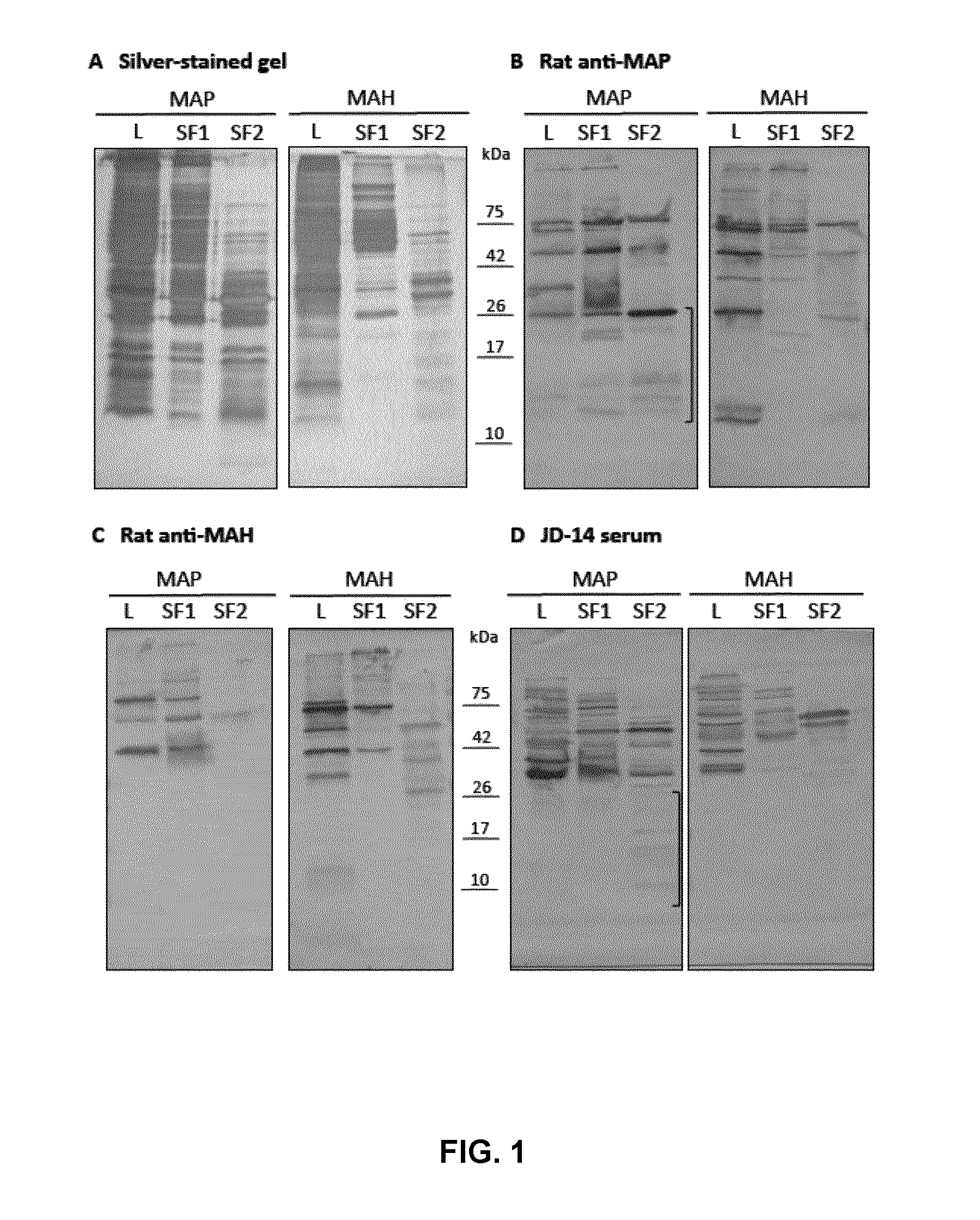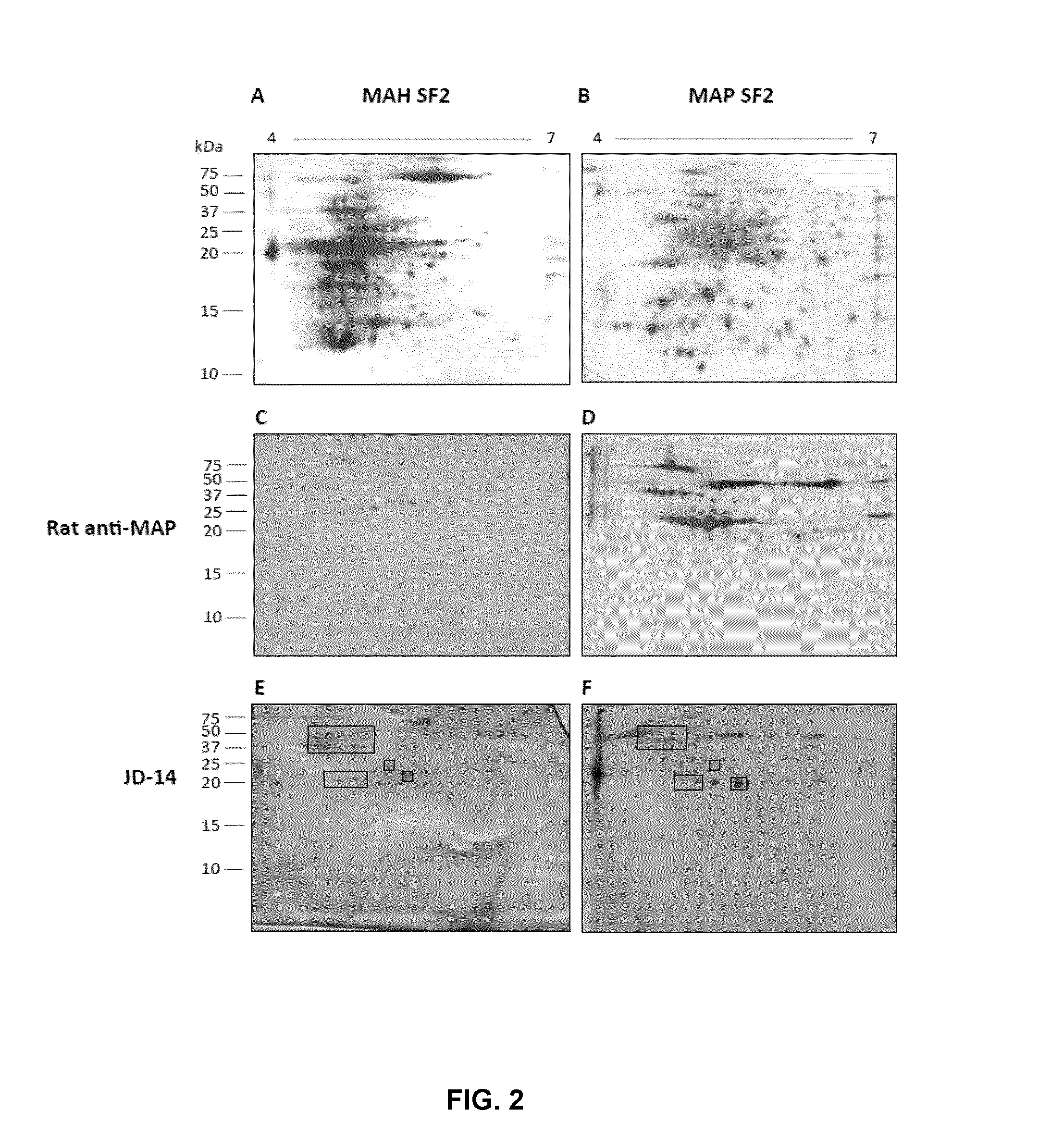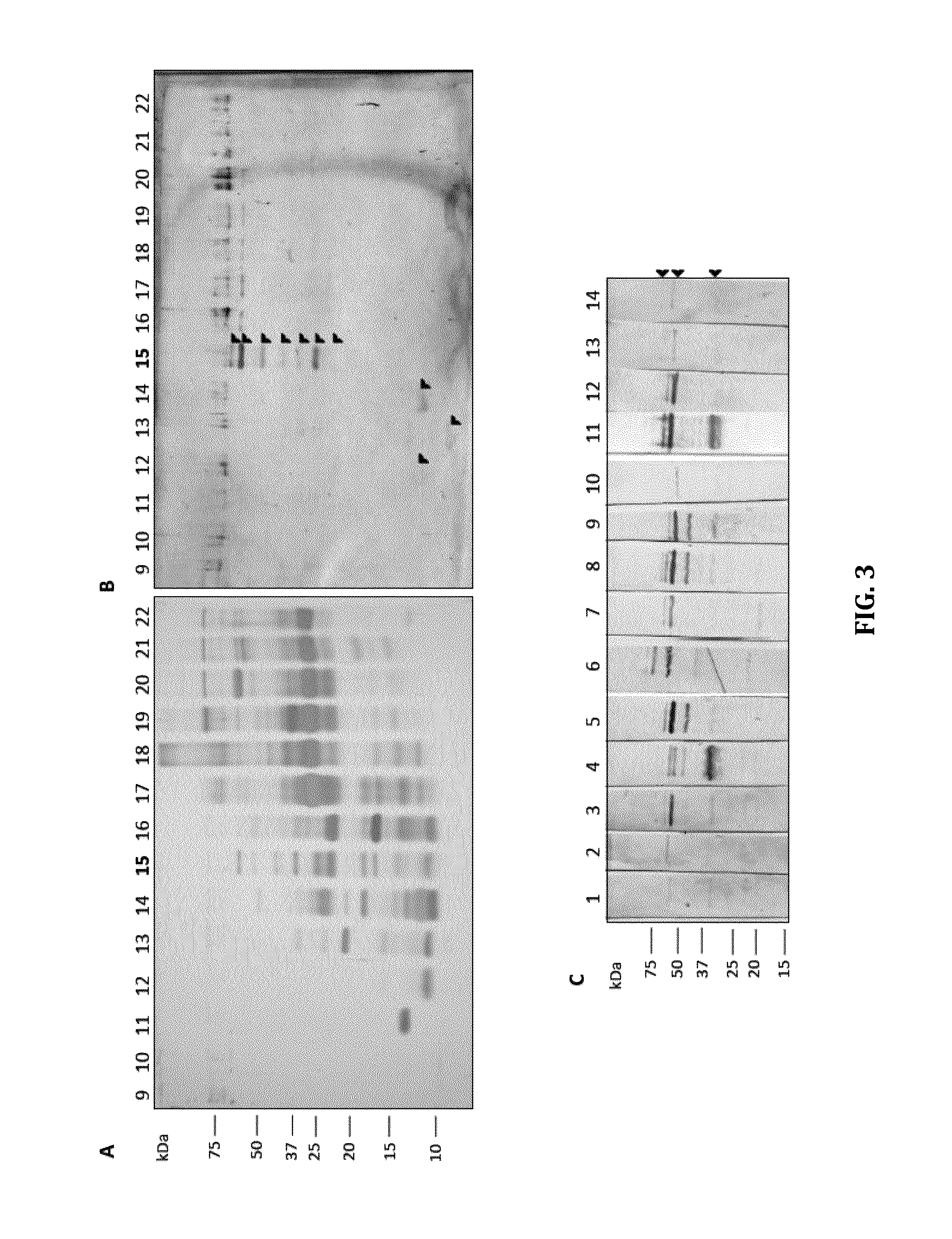Biomarkers for mycobacterium avium paratuberculosis (MAP)
a biomarker and mycobacterium avium technology, applied in the field of protein biomarkers for the detection of maps, can solve the problems of difficult antigen selection and the efficacy of these methods
- Summary
- Abstract
- Description
- Claims
- Application Information
AI Technical Summary
Benefits of technology
Problems solved by technology
Method used
Image
Examples
example 1
Secreted Proteins as Biomarkers for Mycobacterium Paratuberculosis Infection
[0062]Johne's disease is a chronic, gastroenteritis of cattle caused by Mycobacterium avium subspecies paratuberculosis (MAP), and afflicts 40% of dairy herds worldwide. MAP-infected cattle can remain asymptomatic for years while transmitting the pathogen via fecal contamination and milk. Current serodiagnosis by Enzyme Linked ImmunoSorbent Assay (ELISA) fails to detect asymptomatic MAP-infected cattle due to the use of poorly-defined antigens, and knowledge gaps in our understanding of MAP components eliciting pathogen-specific immune responses.
[0063]As set out herein, the inventors have defined a subset of proteins that contain putative antigenic targets and, second, screened those antigen pools for immunogens relevant in detecting infection. MAP secreted proteins were captured and resolved using a 2-step fractionation method and reversed-phase liquid chromatography resulting in the identification of 162 u...
example 2
Recombinant Expression of MAP Antigen Proteins
[0094]MAP proteins (MAP0196c, MAP1569, MAP0471, MAP1981c, MAP3634, MAP1693c) were recombinantly expressed in E. coli strain BL21-CodonPlus(DE3)-RIPL.
[0095]MAP K10 nucleotide sequences obtained from the KEGG Paratuberculosis Genome reference bank were codon optimized for E. coli K12 using the Codon Optimization Tool (Integrated DNA Technologies). Gene sequences were synthesized as gBlocks (IDT), cloned into pET30a in-frame with a C-terminal 6×Histidine-tag using the isothermal assembly method, transformed into E. coli HB101, and plasmids sequenced to, confirm gene / sequence identity. Recombinant protein expression from these plasmids was carried out in E. coli BL21-CodonPlus(DE3)-RIPL. Briefly, overnight cultures were subcultured 1:100 in 600 mL Luria-Bertani (LB) broth supplemented with 50 μg / mL of kanamycin and 35 μg / mL of chloramphenicol, and grown at 37° C. to OD600 0.6. Protein expression was induced using 0.1 mM IPTG, and cultures in...
example 3
Immunogenicity of MAP Recombinant Proteins and Generation of Antibodies
[0099]Sprague-Dawley rats were immunized with MAP recombinant proteins generated and polyclonal antiserum was generated for all proteins. Each MAP recombinant protein was observed to be immunogenic in rats.
[0100]A 1:1 emulsion of 50 μg of recombinant protein in PBS, pH 7.2 and TitreMax gold adjuvant was injected intramuscularly into a Sprague-Dawley rat. Recombinant MAP proteins were generated as set out in Example 2. Four subsequent immunizations consisting of 25 μg of protein emulsified in Freund's incomplete adjuvant were administered biweekly. Four days following the last immunization rats were euthanized and whole blood collected for serum preparation. The immunization protocols, use and care of all animals in this study were approved by the University of Guelph Animal Care and Use Committee. Immunoblotting was carried out as follows: one μg of each recombinant protein was resolved by SDS-PAGE, transferred t...
PUM
| Property | Measurement | Unit |
|---|---|---|
| Molecular weight | aaaaa | aaaaa |
| pH | aaaaa | aaaaa |
| pH | aaaaa | aaaaa |
Abstract
Description
Claims
Application Information
 Login to View More
Login to View More - R&D
- Intellectual Property
- Life Sciences
- Materials
- Tech Scout
- Unparalleled Data Quality
- Higher Quality Content
- 60% Fewer Hallucinations
Browse by: Latest US Patents, China's latest patents, Technical Efficacy Thesaurus, Application Domain, Technology Topic, Popular Technical Reports.
© 2025 PatSnap. All rights reserved.Legal|Privacy policy|Modern Slavery Act Transparency Statement|Sitemap|About US| Contact US: help@patsnap.com



